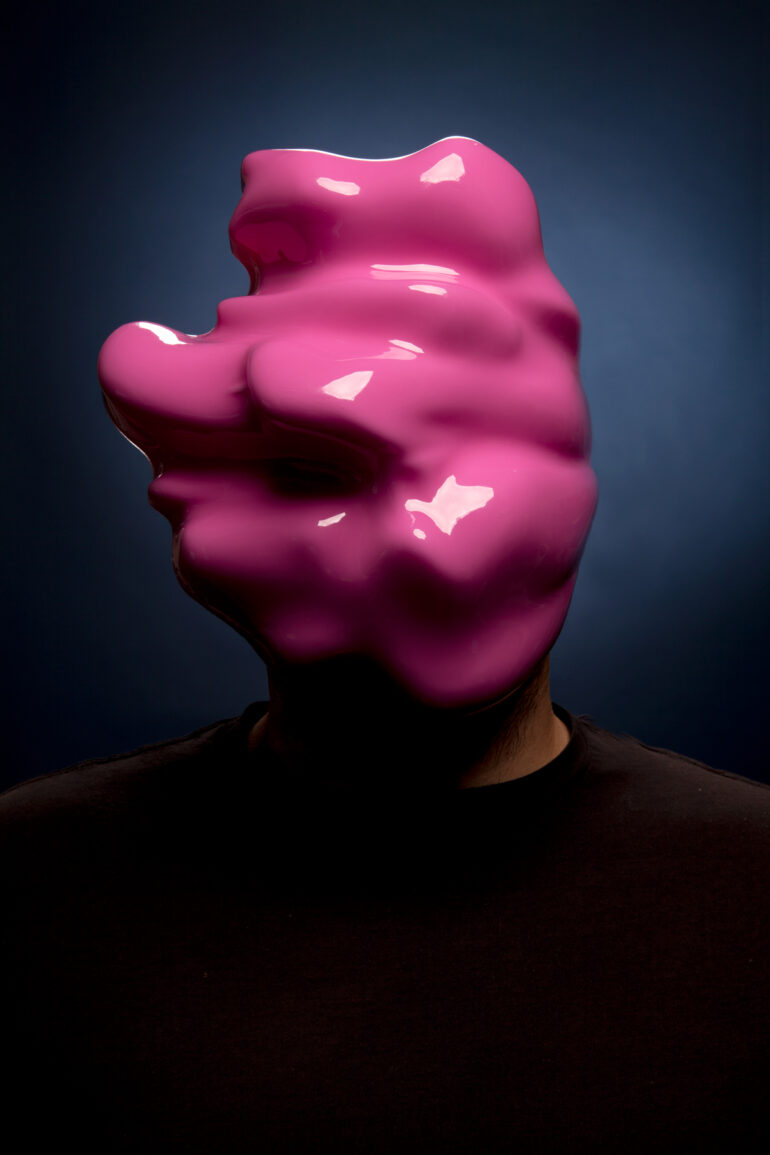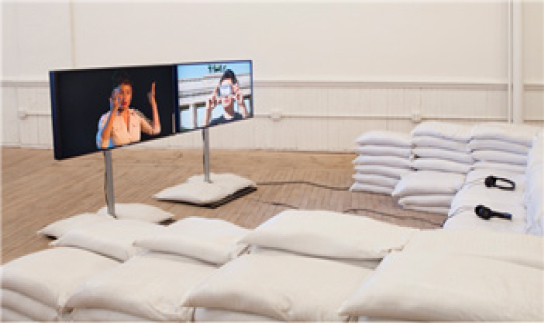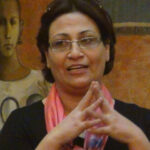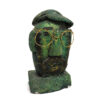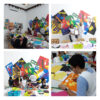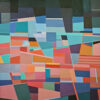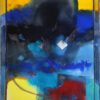Introduction
Internet art sparked the art world when it emerged in the late 1980s. It used the internet as a tool for production of works, and challenged the ways by which we understand curating exhibitions, marketing, and traditional artistic production. Internet art has been associated with (New Media Art) which also uses means of digital products to create artwork.
On the other hand, during the mid-2000s, post internet art emerged, distinguishing itself significantly from (New Media Art). Instead of taking the internet as its medium, post-internet artists take the internet as subject matter, posing issues such as surveillance, infrastructure, and control over the internet. What is happening today, under the weight of digitization, is a redefinition of authorship, collaboration, and materiality as well as a need for new theoretical and aesthetic notions of how – and where – art is made, viewed, marketed and collected.
This article examines briefly the post internet phenomenon and its representation in the art world.
Internet and post internet art
Artists have been using the internet either directly by working with the medium or indirectly by seeking inspiration, exchanging ideas, or simply accessing information since the early 1990s. The second group of artists take what they need from the online environment and produce their work ’post’ the internet (i.e. they have the ability to stand outside the internet to some extent). However, in an increasingly intertwined culture, staying offline is perhaps impossible. Moreover, thanks to the online profiles and social networks, one’s avatar hovers in the net at any time. In such a world, “artist, even art itself, is assumed to be fully immersed in networked culture and is no longer quite able to assume the position of an observer”(1). Because the distinction between producer and consumer no longer exists, artists are shaping and shaped by this culture. In this regard, it is important to investigate how the internet is used by artists associated with internet and post internet art, which will reveal a contradiction and a common history behind the two ’genres’: the internet as a Tool, and the internet as an Awareness.
Internet art presents works that employ the internet as a medium, which in turn defines the subject matter and nature of these works. This is an art that cannot be experienced in any other way. The online status determines time and place of the work, and the cause of its existence. In contrast, many artists today define themselves as ’post internet’. Artie Vierkant argues that this shift from internet art to post internet art occurs when artists act less as interpreter, transcriber, narrator, curator, architect. and more as fully engaged participants(2). He sees the term as nothing more than a result of the contemporary moment: inherently “informed by ubiquitous authorship, the development of attention as currency, the collapse of physical space in networked culture, and the infinite reproducibility and mutability of digital materials”.(3)
Post-internet as a contemporary moment

When we understand the contemporaneity of the internet as a condition of every work of art produced, whether online or offline, we can grip the idea that, post internet is a cultural phenomenon and not just an artistic or technical one. “Post internet, and specifically within the context of art, simply could be understood as a term that represents the digitization and decentralization of all contemporary art (via the internet) as well as the abandonment of all the New Media specificities. Post- internet, then, is not a category but a condition: a contemporary art”.(4)
Post internet art doesn’t address a “New Media” and thus doesn’t inhabit a cultural niche; rather it addresses what rapidly had become the common, everyday media associated with the internet and its related digital tools. And so, it is expected to consider issues related to internet policy, mass clandestine surveillance and data mining, the physicality of the network, the posthuman body, radicalized information dispersion, and the open source movement. It looks at changes taking place in the age of the ubiquitous internet, from information dispersion and artwork documentation to human language and approaches to art history.
Problematics of prefix ’post’
Marisa Olson defines the term as “(my) online and offline work was ’after’ the internet in the sense that ’after’ can mean both ’in the style of’ and ’following’. For illustration, I referred to the concept of postmodernity coming not at the ’end’ of modernity, but ’after’ (and with a critical awareness of) modernity”.(5)
Olson’s understanding, in this sense, reinforces the idea that post internet is about its environment and predecessor as much as it is about the contemporary culture. Her definition acknowledges that internet art can no longer be distinguished as that which is strictly computer- or internet-based, but can be identified as any kind of art that is influenced in some way by the internet and digital media. and addresses their impacts on culture at large. This can be done well on networks but can and should also exist offline.
Michael Connor, in turn, understands it as “less for a clear demarcation of ’before’ and ’after’ than to represent a continuously evolving critical dialogue”.(6) This is a reasonable description of the prefix ’post’; Because it emphasizes the element of criticism and does not make a sharp distinction for genres coming ’before’ post Internet.
Omar Kholeif adopts the popular notion that post internet is an art that is ” aware of the internet”(7). So it is not necessarily a medium-specific. It is an art critically involved in the internet as a comprehensive social and political medium.
Zack Blass, on the other hand, and in opposition to the excessive use of the prefix ’post’, states that, “post“ announces that challenging instances of passage and transformation can only be articulated through what they proceed”(8), then uses the term ’contra’ in place of ’post’(9), to indicate the revolutionary potential of the internet. His use of ’contra’ suggests that the normalization of a particular way of thinking is the greatest challenge when we deconstruct an idea. Blass, against the normalization of commercialization and capitalization in the digital world, suggests that “Contra-internet aesthetics disallows the internet to determine its horizon of possibility”.(10)
Jesse Darling argues that ’post’ should not be understood as “the successor to” but as “crisis of “, and, he adds ”every artist working today is post-internet artist”(11). This delineation has powerful implications. First, it implies that Darling sees the internet as a crisis with all its exasperation, and second, the artists as part of the broader cultural environment neither ignore nor flee from the (cultural) influence of the internet on their practices and lives.
Thus, post internet refers to the current trend in art and criticism concerned with the impact of the internet on art and culture. It implies that digital technology is interwoven with social, cultural, political and also geographical environments to such an extent that it results in new cultural, symbolic, and material forms. In an increasingly digital world, art is no longer just something that can be experienced in a three-dimensional space. Artists are now seriously exploring how to make art that works both online, offline and in the blurry space in between.
Although the term is still in its early stages, two important art exhibitions have contributed to the consecration of the term and the fame of the artists who chose to be attributed to it: (Post-Internet Art) Exhibition, held in 2014 at the Ollins Center for Contemporary Art in Beijing, and the “Surround Audiences” exhibition held in 2015 at the New Museum Triennial in New York. The term is flourishing since then thanks to the concerted support of groups of galleries, mostly based in New York, Berlin, London and Sharjah, but also further afield, and with a strong online presence.
Cases and examples
Hito Steyerl uses themes of withdrawal and concealment in her works. In an interview about her preoccupation with disappearance, Steyerl pointed out that “it is a highly ambivalent concept: it is something to be desired, that gives relief from the constant imaging that we are all subject to. But it is also something to be feared, evoking the specter of mass political abduction”(12). This paradox is also central to her works: (How Not to be Seen: A Fucking Didactic Educational.MOV File, 2013)(13) and (Is the Museum a Battlefield, 2013)(14).
In the first video, Steyerl suggests how to be out of control area and as it is sometimes repeated in the video “to off screen” when presence is associated with being on screen as long as possible. The narrator lists thirteen ways to become invisible, which includes “being a female over fifty, living in a gated community, owning a handbag against paparazzi, surfing the dark web and being a dead Pixels.” Steyerl’s work in this sense is not only didactic but also provocative with its references to the social issues of our time.
In the second video, commissioned by the 13th Istanbul Biennial, Steyerl discusses how museums and cultural institutions are funded by arms trade companies and how their funding becomes “invisible” once they enter the museum, following an empty bullet shell found in an area in the southeast of Turkey. She investigates the relationships between these companies and Koc Holding, the biennial’s main sponsor and provider of armored vehicles to the Turkish military through its subsidiary OTOKAR.
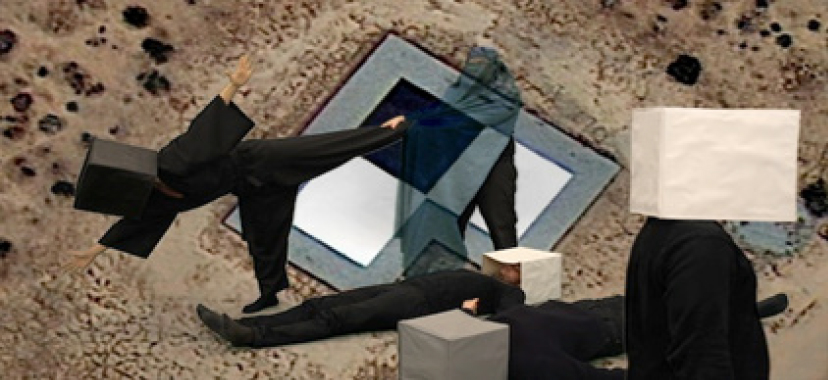
When the two videos are studied together, one might suggest that invisibility tactics can be used by existing power structures to obscure their effects, and by internet users to escape the same structures. It is as contradictory as it is useful.
Adam Harvey finds his craftiness in the narrow logic of this paradox, and asks why not use invisibility against invisible infrastructures, and facial opacity against facial legibility? His work (CV Dazzle,2010)(17)is an almost aggressive artistic response to government efforts at creating a self-justifying program of policies and technological tools designed to dismantle individual privacy. It explores how fashion can be used as camouflage from face-detection technology, the first step in automated face recognition. It is a concept and strategy, not a pattern or product, and it is always designed relative to a specific algorithm and unique to each face. Utilizing makeup, hair styling, clothing in a manner that parallels high concept fashion, Harvey is addressing the need to avoid not just detection but constant observation: It is not so much that the average citizen needs to camouflage themselves but that the continual identification, location and tracking of their persons is more than just intrusive in that it establishes a continual condition of suspicion; we are being observed not to protect us from threats but because it is believed any one of us might become a threat.
Zach Blas’ work addresses the same issues as Harvey’s. He addresses the complex issues of facial recognition as an intrusion into privacy rights, but his (Facial Weaponization Suite،2013)(19) takes a different and more intriguing artistic strategy.
the (Facial Weaponization Suite) is a set of masks made in community workshops that reject algorithmically applicable data for facial recognition software. The objects of the suite are weapons of distortion, patterns of escape that do not allow for easy facial calculations and classifications. This makes them significantly different from Harvey’s work because their overt nature as physical objects represents demonstrative and declamatory response to privacy intrusion. Moreover, the communal statement even more substantial because it is supported by a public intervention.
It is one thing to remind individuals of their immersion in digital -spectacle; it is another to explore why this matters. Ryan Tricartin, an American artist of a generation deserving of the label “Native Digital Citizens” (born in the 1980s and beyond) takes this point even further. Tricartin creates installations and multi-faceted video presentations featuring aesthetic characters that represent our internet-saturated minds.(20) those character appears to have internet-related ADD that controls over the brains and injects them with unconnected thoughts and images. He uses cacophony as a guiding and structural principle: layers of narration and sounds constantly escalate with ultra-fast moving images that reflect the tumultuous information age. It is in this cacophony that “digital natives” see representation of themselves and their lives while older “digital immigrants “perceive the technological hustle around them, reflecting how different generations in the post internet age are shaped by media overstimulation and massive consumption. Tricartin well represents the post internet moment as an internet state of mind; to think in the style of the network. In the context of artistic practice, the post-internet status describes an art object created with awareness of the networks within which it exists, from concept and production to dissemination and reception.
Post internet art has been criticized as a form of self -promotional branding, and promoting the McLuhanite fantasy that (The Internet Changed Everything) in apparent disregard for the ways in which digitalization has reinforced existing social and economic divisions.
Nevertheless, post internet era is still evolving and there are many factors that determine the validity and influence of the term. The brutal nature of post internet art cofounds the public and the private, the original and the copy, conflates production and consumption, and blurs the boundaries between the real and the virtual. Previous notions of distinct analogue and virtual spaces have collapsed. Art is now not only online medium-specific occasions – it is online all the time, no matter what form it takes. The art world, like the rest of the world, is just beginning to analyze the consequences of this transformation.
Finally, the post internet art is an attitude that is more concerned with being human, than with being digital. Thus, it is not a beginning of an era, but rather a poignant mark in the art history of enduring possibilities.


1. https://rhizome.org/editorial/2013/may/31/hito-steyerl-how-not-to-be-seen/
2. Ibid
3. https://www.wikiart.org/en/hito-steyerl/is-the-museum-a-battlefield-2013
4. Connor, Michael. (2014). Post-Internet: What It Is and What It Was. In Kholeif, Omar (Ed.), You Are Here: Art After the Internet. London: Corner house Publishing. P:57.
5. Vierkant,Artie. (2010). The Image Object PostInternet.Jst Chillin.org. last downloaded :3/6/2022. https://jstchillin.org/artie/pdf/The_Image_Object_Post-Internet_a4.pdf
6. Ibid.
7. Doulas, Louis. (2012). Within Post Internet – Part One. Last accessed :3/6/2022 http://s3.amazonaws.com/arena-attachments/191659/f9920b982e5457c97374810db32c6924.pdf?1390438645
8. Olson, M. (2014). Postinernet: Art After the Internet (2010). In Art and the Internet. London: Black Dog Publishing. P:60
9. Connor, Michael. (2014). p:57
10. Sutton ,Kate. (2016).Winds of Change: Curator Omar Kholeif.Cultured. https://www.culturedmag.com/article/2016/07/07/omar-kholeif
11. Blas, Zach. (2014). Contra-Internet Aesthetics. In Kholeif, Omar (Ed.). P:87
12. Ibid:89
13. Ibid
14. Darling, Jesse. (2014). Post-Whatever #usermilita. In Kholeif, Omar (Ed.). P: 137.
15. Connor, Michael .(2013). Hito Steyerl’s ‘How Not to be Seen: A Fucking Didactic Educational .MOV File. Rhizome. https://rhizome.org/editorial/2013/may/31/hito-steyerl-how-not-to-be-seen/
18. Harvey,Adam. (2020), CV Dazzle, https://cvdazzle.com/
19. Blas,Zach.(2013). Facial Weaponization Suite.https://zachblas.info/works/facial-weaponization-suite/
20. To watch the artist installations and videos visit his site on atrsy.net: https://www.artsy.net/artist/ryan-trecartin
A Palestinian researcher, translator & author. She holds a Master's Degree in Biotechnology and a Master’s Degree in Psychology. Her main research interests are postmodernism studies and biopolitics. She’s the author and translator of numerous books on Art and Culture.

